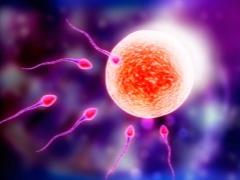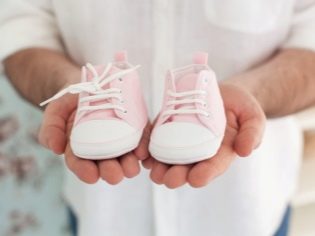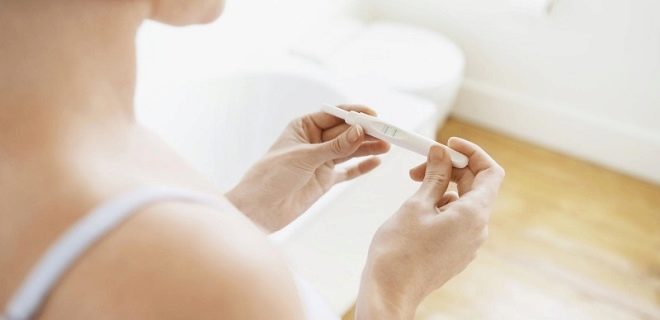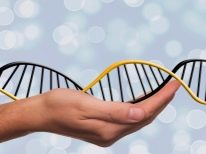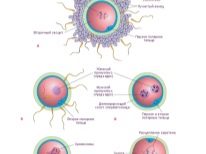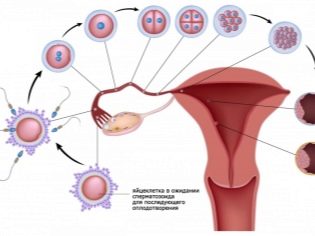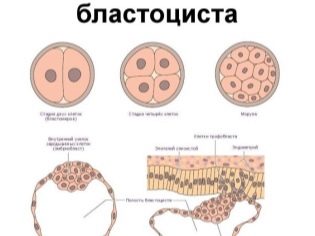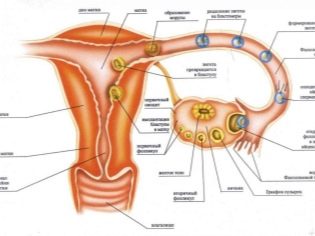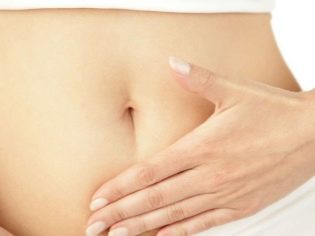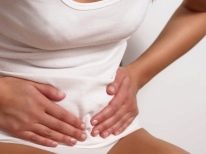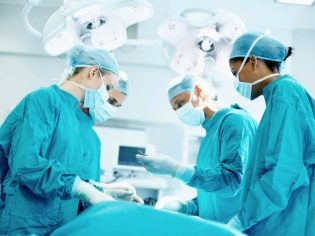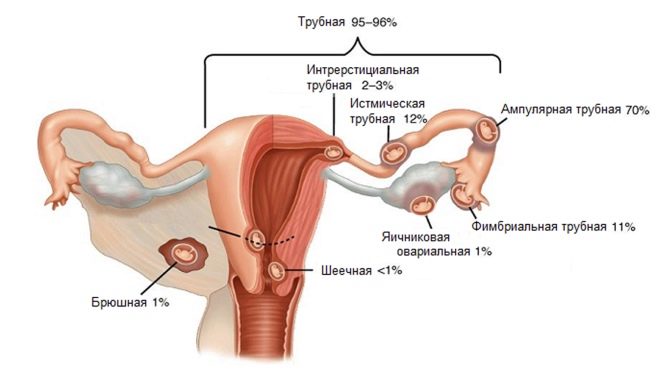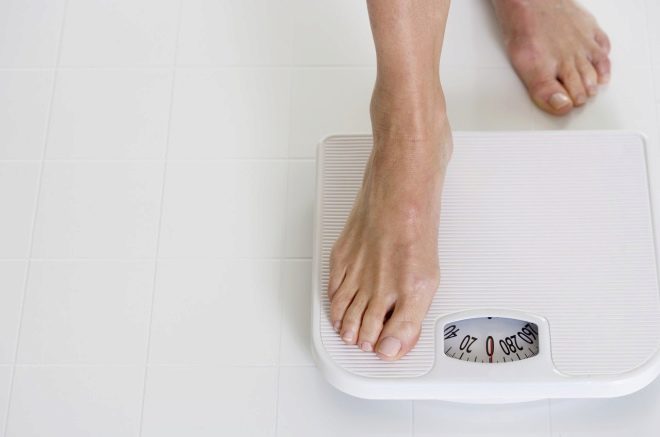All about conceiving a child: what happens in a woman's body and how does an egg cell fertilize?
The beginning of a new life is a big mystery of nature, and not all the mechanisms and nuances of this sacrament have been studied by physicians and scientists. Conception of a baby is an amazing and fascinating process, which many do not even realize at the time of the miracle. About what is actually happening at the time of the merger of the maternal and paternal germ cells, we will describe in more detail. This information will help planning pregnancy, and will also be of interest to anyone who is already a parent or is waiting for their baby.
What it is?
Conception of a child is a very complex biological, chemical process, in which not all can be explained only from the point of view of physiology. In conception there is always something of a divine principle that cannot be measured or counted. Thanks to him, conception sometimes comes in a miraculous way for those who, from the point of view of medicine, should not have it.
In medicine, conception is called the moment of fertilization of the female germ cell - the egg cell by the male cell - the sperm cell. It is from this moment that the beginning of the actual pregnancy is considered, from this point of reference its embryonic gestational period begins. Obstetric term is counted from the first day of the last before pregnancy monthly. Thus, by the time of conception, which usually becomes possible during the period of ovulation, a woman already has 2-3 obstetric weeks of pregnancy. Medical determination of the onset of pregnancy hardly reveals the whole meaning of this amazing process.
In a woman's body, the changes begin from the very first tenths of a second, as soon as the germ cells merge. The process of fertilization starts a cascade of changes aimed at creating the most comfortable conditions for the maintenance and development of a new life.
Fertilization
A man can conceive a child any day if he is healthy. Spermatozoa - male sex cells - are always on "full alert". But in a woman fertilization is possible only on certain days of the menstrual cycle. After the next menstruation is completed, the stage of maturation of the follicle begins. In a woman's ovaries, several follicles mature, but only one or, in extreme cases, two of them are to become dominant. Around the middle of the cycle, the size of the dominant follicle is close to 20 mm, which means that the egg cell inside is ripe and ready to go. The moment of rupture of the follicle is called ovulation. In women, this day comes depending on the duration of the menstrual cycle on different days. If from menstruation to menstruation usually takes 28 days, ovulation should be expected for 14 days, if 30 days pass - for 15 days.
With an irregular menstrual cycle, it is quite difficult to determine the day of ovulation on your own, but this can be done with the help of an ultrasound - the process of maturation and growth of the follicle is clearly visible by inserting a vaginal ultrasound probe.
The place of formation of eggs - the ovaries. After the rupture of the follicle, the female reproductive cell leaves the ovary and goes into a wide part of the fallopian tube. This is where fertilization should occur. The process of cell fusion can occur immediately after its release or a day later. The egg cell lives and retains the ability to fertilize for 24-36 hours.
During unprotected intercourse, spermatozoa get into the vagina, from where their journey to the location of the egg begins. The path of the sperm can be compared with natural survival, natural selection - only the strongest and strongest representatives from tens of millions of cells will survive and reach the goal. By the time sperms arrive, ovulation may not yet occur, but in this case, nature has endowed male germ cells with vitality - they can be in the tube and maintain their abilities for 3-4 days.
In this case, fertilization occurs immediately after the release of the egg. If sexual intercourse took place immediately on the day of ovulation, then fertilization occurs approximately 30-40 minutes after ejaculation. In this way, Favorable days for conception in women is considered the day of ovulation, as well as 2-3 days before her and a day after. Only 5 or 6 days during the month are ideal for intercourse in order to conceive a baby.
About the approach of ovulation, a woman can guess by some characteristic signs. Usually, her libido increases - this mechanism is provided by nature so that a woman of the fair sex does not accidentally miss the most opportune moment. Discharges become viscous, abundant, reminiscent in consistency of raw egg white. The sensitivity of the nipples of the mammary glands increases, the breast itself may slightly increase in size.
The very moment of ovulation, many women are even able to feel. They feel the rupture of the follicle as small pulling pains in the left or right lower abdomen - the location of the pain depends on whether ovulation occurs in the right or left ovary.
Some women do not feel this moment, and this is also a variant of the norm: it all depends on the individual characteristics of the female body.
The egg cell is coated with a three-layer shell. After a fairly large number of sperm reaches it, begins a massive "attack" of the membranes. Special structures in the head of the sperm emit substances capable of dissolving the shell of the egg. However, it is destined to fertilize only one sperm. After the most persistent, persistent and strong penetrates the shell of the female cell, the body immediately receives a signal that fertilization has taken place. The shell of the egg abruptly changes its permeability, and no other sperm can penetrate.
Male genital cells left with nothing swarm around the egg for several days and then die. If fertilization does not occur, the egg itself dies a day after ovulation begins its way into the uterine cavity. Two weeks later, menstruation begins - with the menstrual blood of a woman's body is cleared from the biomaterial that has become unnecessary. If conception has happened, a new stage of development begins.
The egg cell must also go into the uterine cavity, but with another goal - to attach and create a cozy “house” for the embryo. In the first minutes after the merger of germ cells, the future genetic structure of the future baby is formed. From mom and dad, he takes exactly 23 pairs of chromosomes.
From the very first minutes, everything is determined - the sex of the child, the color of his eyes and hair, skin color, physique, hereditary diseases and even talents and abilities. All this information is contained in the genetic code. The fertilized egg is called a zygote, it is constantly being crushed and modified, the processes proceed with cosmic speed.
Changes in the body after fertilization
Immediately after the egg is fertilized, a large-scale operation in the body unfolds to create new conditions that are most optimal for the development of a new life. In large quantities, the hormone progesterone begins to be produced.Its task is to make the walls of the uterus more friable, so that the embryo can consolidate on one of them without any problems and “grow” into the tissues. This place will then become the basis for the placenta.
Under the action of progesterone from the first minutes after conception, the metabolic processes begin to flow somewhat faster. Of course, a woman will not be able to feel these changes, at least in the first couple of weeks after fertilization.
Progesterone provides everything for the development of the baby - it suppresses maternal immunity, so that “by mistake” does not take the embryo as something alien and does not destroy it. Under the influence of this hormone, the uterine muscles relax and its tone decreases, which ensures pregnancy.
The cervix also from the first minutes after conception reacts to innovations and begins to fulfill its role. The cervical canal inside it, which on the day of ovulation is ajar and provides sperm transfer from the vagina, immediately closes, filling with thick mucus.
This mucus plug will protect the uterine cavity from viruses, pathogenic bacteria and other unwanted penetrations throughout pregnancy. Only before the birth mucus plug will leave its place. Her discharge relates to the category of precursors of imminent labor.
At the cellular level, a lot of interesting things happen. During the first 30 hours after conception, the zygote, which has become an egg cell that fused with the sperm cell, starts forming nuclei. It is constantly being crushed, which means that the number of cells increases, and the size of the cell does not, just new cells are smaller. The crushing period lasts about three days. All this time, after intercourse and fertilization, the zygote is in constant motion - it seeks to get through the uterus.
On day 4, the embryo consists of approximately 16 cells. Blastomeres begin to divide into the inner and outer layer. On the 5th day after conception, the zygote changes its status and becomes a blastocyst. There are about 30 cells in it at the very beginning and already about 200 cells by the end of the stage. The blastocyst has a round spherical shape. This is exactly what a former egg looks like at the time of embryo implantation.
Embryo implantation
Implantation is the process of introducing a blastocyst into the tissue of the uterine wall. The embryo is usually attached one week after conception, often at 7-8 days after fertilization. From this point on, the chorionic gonadotropic hormone, which is also called the pregnancy hormone, begins to be produced in a woman’s body, and determining its concentration is the basis of all existing pregnancy tests.
So that contact with the endometrium was more dense and the “docking” was successful, the blastocyst gets rid of the shiny shell immediately after the fertilized egg descends into the uterus. The attachment of the ovum is a signal to begin the active work of the corpus luteum of the ovary. Now, progesterone is produced even more, because the main task of the entire female body is to preserve pregnancy.
A prerequisite for implantation is the level of pregnancy-supporting progesterone in the blood, as well as the viability of the fetus itself. If a baby with genetic errors is conceived, then with a high degree of probability the implantation will be unsuccessful, the fertilized egg will be rejected.
Implantation sensations are also purely individual. Some women do not even know what important processes occur in their bodies, others may notice that about a week after ovulation, they began to get tired faster, and their mood changes as the weather in the coastal city. On the day of implantation, a small amount of blood smears of blood may appear, associated with endometrial integrity problems. Implant bleeding does not last long - no more than a day.That it is the first obvious sign of pregnancy before the delay.
Not everyone can feel the implantation, implantation bleeding may not occur. In any case, a week after implantation in the blood and urine of pregnancy, the concentration of chorionic gonadotropin reaches a sufficient level so that the fact of new life can be determined by laboratory analysis of blood for hCG or a test strip, which can be easily purchased at any pharmacy or even in a supermarket.
On women's forums you can find descriptions of feelings after conception. Usually they are left by women who dream of becoming pregnant and have been trying to conceive a baby for quite a long time. Such women often describe that the chest began to hurt almost the next day after intercourse, that the lower abdomen hurts after the alleged conception. Physicians tend to call such feelings psychogenic, since there are no objective reasons for such pains and symptoms.
Progesterone, even if the conception was successful, is still not so much that the chest aches and grows at a rapid pace, and the pulling pains in the lower abdomen are hardly associated with cellular processes that are still occurring only in the fallopian tube.
Violations
In theory, everything sounds rather optimistic, but in practice, the conception and subsequent transportation of a fertilized egg into the uterine cavity can proceed with impairments. In most cases, these violations lead to abortion at the earliest possible time. Some women may even remain unaware that they were pregnant. It’s just that two or three days are delayed by regular menstrual periods, and the fact that they are slightly more abundant than usual, women, as a rule, do not pay much attention.
Difficulties can arise at the very initial stage - poor quality of the egg or violation of the properties of sperm can prevent conception, even if sexual intercourse is carried out directly at the time of ovulation.
Chronic diseases of the gynecological profile, genital infections, ovarian dysfunction, addiction to alcohol or nicotine can influence the female body. Also, any woman has anovulatory cycles - months in which ovulation does not occur at all.
On the part of men, hormonal disorders, radiation exposure, harmful substances, alcohol and drugs, prostatitis, varicocele, genital infectious diseases, and venereal diseases can be causes of infertility. Even with a banal cold, which one of the partners suffers at the time of intercourse, the probability of conception decreases.
Problems may arise at the stage of fertilization itself. If more than one sperm cell penetrates the egg cell, a triploid embryo is formed that is not capable of development and growth, since its genetic set will differ from the normal set of 46 chromosomes. Genetic pathologies can also occur if fertilization produces a sperm cell with an altered morphology — a deformed or forked head, an impaired acrosome, mutations and deformities of the tail.
Such an embryo will develop as much as a specific genomic anomaly allows. Most often, such a pregnancy ends in miscarriage, spontaneous abortion in the earliest terms, less often during the first trimester of pregnancy.
Unpredictable difficulties may also arise during the transportation phase of the zygote. The movement of the egg into the uterus provides special villi inside the tube, the egg itself is the largest and most fixed cell of the human body.
If the mobility of the villi is impaired due to inflammatory diseases of the female reproductive system, if the patency of the uterine lumen is impaired, the zygote may remain in the fallopian tube and gain a foothold in the absence of an alternative in it 7-8 days after conception.Then an ectopic pregnancy develops. After its detection, the embryo is removed surgically, since it represents a serious danger to the mother's life - rupture of the fallopian tube leads to severe internal bleeding, which often leads to the death of a woman before the arrival of the Emergency Room.
It happens that, without having sufficient full-fledged contact after dropping into the uterus with the endometrium, the fertilized egg can migrate to the peresheek or cervix. Such an ectopic pregnancy has more dangerous prognoses, in most cases of a cervical pregnancy, the situation can only be corrected by removing the entire uterus, which leads to subsequent post-traumatic infertility.
However, such a frightening version of the development of the situation is a rather rare phenomenon. Most often, if the implantation process is disturbed, the egg just dies before attachment and moves away with the menstrual blood after some delay.
Sometimes the fertilized egg dies after implantation. The cause can also be chromosomal abnormalities, non-viability of the embryo, as well as hormonal deficiency. With a small amount of progesterone and hCG, the ovum may be rejected by the woman’s own immunity. The endometrium of the uterus will not be compacted and cover the fetal egg from all sides with progesterone deficiency.
Harmful effects - contact with varnishes, paints, chemicals, pesticides and toxins, taking alcohol and drugs, smoking, viral diseases of a woman at this stage can also cause early rejection of the ovum from the uterine wall and its death.
If the death occurs before the delay of menstruation, often talk about biochemical pregnancy. With it, there will be a delay, the tests will show the second weak strip, determining traces of chorionic gonadotropin in the urine, however, menstruation after a few days of delay will nevertheless come.
After a biochemical pregnancy there are no contraindications for planning a pregnancy. However, it is still advisable to make a spermogram and donate blood for hormones in order to exclude the causes of biochemical pregnancy, which can be repeated again.
How to increase the probability of conception?
Planning a pregnancy is always interesting to know whether they themselves can do at least something that can affect the probability of a successful conception. The answer to this question as a whole is positive, yes, a lot depends on the spouses themselves and their attitude towards their health, including reproductive health.
In order to maximize the chances of conception, it is advisable to visit a doctor first and pass at least basic tests - for sexually transmitted infections, for venereal diseases, semen. Men do not like to admit this fact, but about 40% of unsuccessful attempts to get pregnant are associated with the male factor of infertility.
Planning a pregnancy is not only a decision to have joint children, it is also targeted action. 3 months before conception, a man should start taking vitamins A, C, E, D, preparations containing zinc and selenium, and folic acid. Such substances are contained both in special male vitamin complexes and in biologically active supplements, for example, Selenzink, Spermaktiv and others. Three months is a period that is necessary to complete one cycle of spermatogenesis, during which time the composition of seminal fluid is updated completely.
A woman should take vitamins and folic acid preferably at least two months before the intended conception. Folic acid accumulates in the body and has a beneficial effect on the process of laying the neural tube of the fetus, its future brain and spinal cord. With a large number of anovulatory cycles during the year, a woman can be stimulated by ovulation and subsequent conception.
After menstruation, hormonal therapy will help the follicle to mature, and as soon as its diameter according to the ultrasound results is considered sufficient, with the help of stimulating hormones its rupture and the release of an egg cell are provoked. Stimulation should be carried out exclusively under the supervision of an experienced doctor, because errors in the choice of drug and determining the dosage can lead to premature depletion of the ovaries, their complete dysfunction.
Men and women in preparation for conception should stop drinking alcohol and nicotine, since these substances have a destructive effect on the sex cells, both male and female. As a result, not only the conception itself can become a difficult task, but also the probability of conceiving a baby with chromosomal pathologies increases.
Also planning to conceive a baby should not eat fast food, canned food, pickled products, factory sweets, because they contain a large amount of preservatives and dyes, causing mutations of germ cells. Only a complete healthy diet, balanced and enriched with vitamins, will help the couple to prepare for conception correctly.
Do not forget about weight. It is much more difficult for women with overweight to get pregnant, and for women suffering from thinness or anorexia, conception is sometimes not available at all.
Weight should be put in order, because it contributes to a change in hormonal levels. A decrease in body weight of only 5% already increases the likelihood of conception by 30%.
A woman needs to know well the peculiarities of her menstrual cycle in order not to be mistaken with the definition of ovulation and the period most favorable for conceiving a baby. Sex should be unprotected. Steam poses can choose any, just to ensure a deeper penetration of seminal fluid into the vagina. Ejaculation in close proximity to the cervix reduces the path that spermatozoa needs to travel, and increases the likelihood of conception.
Intimate gels and lubricants, douching before and after sex can disrupt the motility of spermatozoa and cause their massive death - the chances of fertilization dozens of times decrease. After sex, a woman should not immediately get up, it is advisable to lie down for about half an hour (we remember that it is such a time that spermatozoa reach the wide part of the fallopian tube, where the egg is located. You can ease the task by lifting your legs. Such a half-hour rest after sex increases the likelihood Conception percent at 20.
If one of the partners has recently had a viral infection, the flu, it is worth moving an important point to a later date. Similarly, you should take a pause if a man or a woman shortly before the time scheduled for conception, took antibiotics, hormones, anticonvulsants or psychotropic substances.
A woman who dreams of motherhood will benefit from yoga, swimming, daily walks in the fresh air. Excessive psychological obsession with conception as the ultimate goal usually causes the opposite effect - pregnancy does not occur even with good test results and the absence of objective reasons for infertility.
The fact is that stress hormones, standing out in considerable quantity, if a woman cannot think about anything except conception, suppress the production of sex hormones, and pregnancy becomes almost impossible at the biochemical level.
The intensity of sexual intercourses in the month defined for conception should be somewhat reduced. Too frequent sexual intercourse makes sperm more scarce in volume, and the concentration of sperm in the volume of ejaculate decreases. Doctors recommend the frequency of sexual intercourse - once every 2 days, while after menstruation you should refrain from active sexual life for 4-5 days.
For a long time, women have known other ways to increase the likelihood of conception - uterine massage, folk remedies, special Kegel exercises.Massage of the uterus is carried out through the vagina and abdominal wall. Its purpose is to improve the blood circulation of the pelvic organs. Internal manual massage is not carried out at home, it should be carried out only in a medical institution with the participation of an experienced obstetrician-gynecologist.
Massage does not give the woman pain, if it is carried out correctly. Several such sessions allow you to solve problems with menstrual disorders, adhesions, small inflammatory processes, increasing the chances of conception.
Among folk remedies, a decoction of the uterus of bovine, which is taken in small portions throughout the whole menstrual cycle preceding the planning month, is especially popular among women. It is also well established grass with the interesting name "red brush". From it prepare water broth and drink courses. Real miracles for female reproductive health creates sage.
However, before using any of the recipes of alternative medicine, it is advisable for a woman to consult a doctor, because herbs are not nearly as harmless and safe as many people think.
Their unauthorized reception can cause disturbances in the reproductive system, complications and severe allergic reactions. And this does not increase the likelihood of successful and successful conception.
Kegel exercises are a very popular set of exercises for the pelvic muscles. At the planning stage of pregnancy, he will help a woman to have more pleasure from having sex, and will also take a lot of pleasant moments to her partner. Then these exercises will help strengthen the muscles of the pelvis and prepare them for labor. After giving birth, the Kegel complex will facilitate an early recovery.
Conception - in numbers and facts
The probability of conception in each menstrual cycle, which is accompanied by full ovulation, in young men and women is 11%. As the age of partners increases, the quality of their germ cells and genetic material deteriorates. So, the chances of conceiving a baby in one menstrual cycle for a 30-year-old woman are 7%, for a 35-36-year-old woman - only 4%, for a woman in 40 years - no more than 2%.
If you cannot conceive a baby for one or two cycles, you should not despair. According to statistics, about 60% of couples in reproductive age become pregnant with regular unprotected sex for six months. Another 30% of families manage to conceive a child during the planning year. If, after 12 months of attempts, pregnancy does not occur, you should definitely consult a doctor and be examined.
If a woman who dreams of motherhood is more than 35 years old, then the probability of conceiving not one child, but twins or triplets, is increased by 25%. Unfortunately, after 35 years, the probability of conceiving and giving birth to a child with chromosomal abnormalities increases, this is due to the natural aging of the eggs.
In 7% of cases, conception does not occur in perfectly healthy men and women for reasons that medicine today can not explain. In 1-2% of cases, long-term infertility is caused by the incompatibility of partners, including their genetic incompatibility.
How the conception of a child takes place, see the next video.
